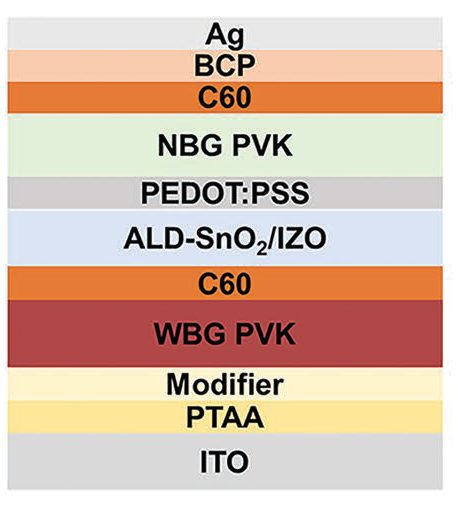Perovskite Solar Cells Consisting of PTAA Modified with Monomolecular Layer and Application to All-Perovskite Tandem Solar Cells with Efficiency over 25%
Bi, H., Fujiwara, Y., Kapil, G., Tavgeniene, D., Zhang, Z., Wang, L., Ding, C., Sahamir, S. R., Baranwal, A. K., Sanehira, Y., Takeshi, K., Shi, G., Bessho, T., Segawa, H., Grigalevicius, S., Shen, Q., Hayase, S.,
Adv. Funct. Mater. 2023, 33, 2300089.
https://doi.org/10.1002/adfm.202300089
This research discusses the enhancement of perovskite solar cells (PSCs) by modifying the hole transport layer (HTL) with a monomolecular layer (MNL). The researchers focused on improving the efficiency of wide bandgap perovskite solar cells used in perovskite/perovskite tandem solar cells. They found that surface-modifying PTAA (poly[bis(4-phenyl)(2,4,6-trimethylphenyl)amine]) with MNL improved PSC efficiency by enhancing perovskite film quality, reducing distortion, and decreasing charge recombination sites. The length of the alkyl group in the MNL also influenced the efficiency of the PTAA layer. The PTAA/monomolecular bilayer achieved a power conversion efficiency of 16.57% in wide bandgap lead PSCs. Furthermore, the PTAA/monomolecular substrate enabled all-perovskite tandem solar cells with over 25% efficiency. These findings demonstrate the potential of MNL modification for improving perovskite solar cell efficiency.
How Paios was used
Electrochemical impedance spectroscopy (EIS), Transient photovoltaic voltage (TPV), and Transient photovoltaic current (TPC) were carried out using Paios with an LED light.

